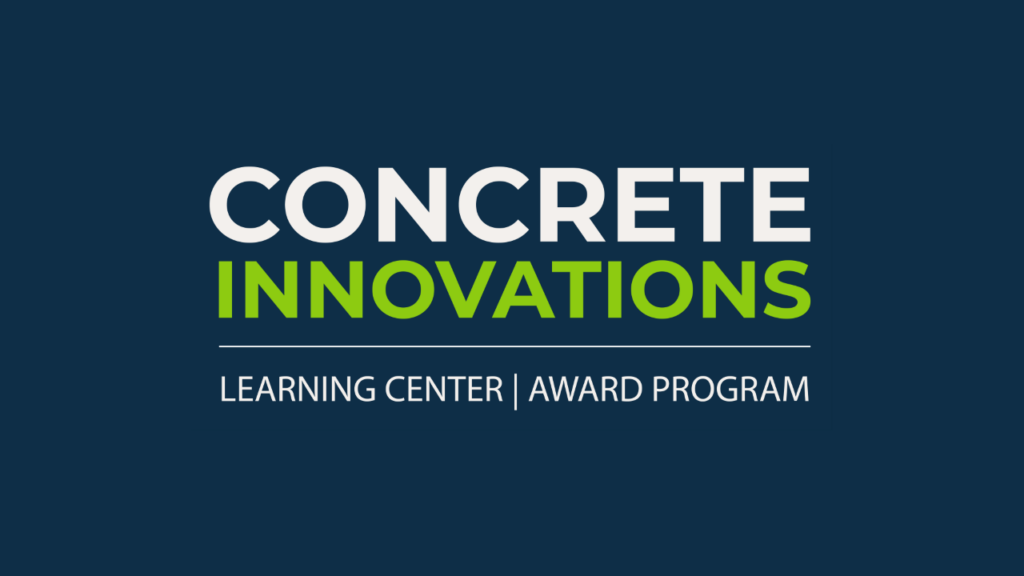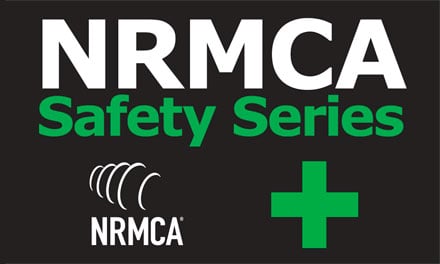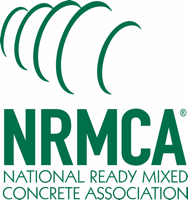Courses for Architects and Engineers
- Cost Effective Net Zero Energy Concrete School Construction Strategies
- Setting Gwp Budgets For Concrete Buildings With Lca Based Carbon Accounting Tools
- The Environmental Impacts Of Building Materials – Comparing Concrete, Wood, And Steel
- A Discussion On The Top 10 Ways To Reduce Concrete’s Carbon Footprint
- Concrete Innovations: Pathways To Reducing Carbon Footprint
- Life Cycle Assessment Of Concrete Buildings
- Concrete Innovations: Pathways To Reducing Carbon Footprint
- Sustainable Concrete: How To Reduce, Quantify, And Specify Carbon
- Selecting Exposure Classes and Requirements for Durability
- Insulating Concrete Forms for Commercial Construction
- Specifying Sustainable Concrete Top 10 Ways to Reduce Concrete’s Carbon Footprint
Build With Strength Launches Concrete Academy
Build With Strength has sponsored the Concrete Academy on BNP Media’s Continuing Education Center. BNP Media publishes Arch Record magazine and as part of the sponsorship they will promote the Concrete Academy to their readership. The Concrete Academy explores the emerging topic of concrete and Net Zero buildings, including innovations, specifications and designing with concrete for Net Zero.
The concept of Net Zero buildings, which aims to improve the negative environmental impact of the built environment, is a key component of the discussion on concrete sustainability. Across the world, concrete is one of the most popular building materials due to its affordability and durability. In addition, concrete is often used because of its thermal mass, or ability to store heat energy, which can reduce energy use in buildings. However, increasingly concrete manufacturers are discussing the sustainability issues associated with concrete production, specifically around the reduction of CO2 emissions. Click here to see the 7 courses offered.
Questions? Contact Lionel Lemay, 847-922-7995.

Concrete Innovations Learning Center
Concrete Innovations Learning Center is designed to bring practitioners, researchers and policy makers together to exchange the latest innovations for sustainable concrete design, construction and manufacturing.
Questions? Contact Lionel Lemay, 847-922-7995.
NRMCA Offers Fundamentals of Concrete Webinar Series On-demand
The course presents the nuts and bolts of concrete materials, mixtures, and construction practices. From the materials used to make concrete, the standards they must meet, the way it’s made, delivered, placed and finished. If you are a design professional, contractor, concrete producer, or a supplier to the concrete industry, this course is a must. If you are new to concrete, this is your crash course on your way to becoming a concrete pro. If you’ve worked with concrete for a long time, this will be an excellent refresher on the latest methods, techniques and standards for concrete. The course is taught online, in three parts of three hours each.
Part 1: Essentials of Quality Concrete | Register Online
Part 2: Forming, Handling, Placing and Finishing Concrete | Register Online
Part 3: Concrete Standards, Requirements and Specifications | Register Online
Questions? Contact Lionel Lemay, 847-922-7995.
.
Fundamentals of Concrete Part 1: Essentials of Quality Concrete (On-demand) | Register
Continuing Education: AIA-CES 3 LU | 3 PDH
This course provides an overview of concrete making materials and the properties required for plastic and hardened concrete. Factors that influence the quality of concrete will be covered. It will discuss some of the mechanical and durability characteristics required of concrete for various applications subjected to different exposure conditions. The materials used in concrete mixtures, including portland and blended cement, supplementary cementitious materials, aggregates, water and admixtures will be discussed along with the general concepts of proportioning concrete mixtures. This course also covers the basics of troubleshooting concrete, such as workability, placeability, finishability, and causes for cracking and other problems.
Learning Objectives
- Have a general overview of all the materials used in concrete
- Understand the chemical reaction between cementitous materials and water
- Understand the properties of freshly mixed concrete as required for different applications.
- Discuss factors that impact the compressive and flexural strength of concrete
- Define curing and explain why it’s important
- Understand factors that impact volume change and potential for cracking
- Identify the concerns with heat of hydration in massive concrete members
- Identify causes and solutions for durability of concrete, such as resistance to freezing and thawing cycles, alkali aggregate reactions, sulfate attack, and corrosion of reinforcing steel
Total Running Time: 3 hours
Certificate of Completion: Approximately 24 hours after watching the recording, you will receive an e-mail with instructions on how to take the course quiz and receive your certificate of completion.
Price: $100
Fundamentals of Concrete Part 2: Forming, Handling, Placing and Finishing Concrete (On-demand) | Register
Continuing Education: AIA-CES 3 LU | 3 PDH
This course is an overview of the proper methods and procedures for transporting, forming, placing and finishing concrete. The material covers transporting, forms, placement tips, concrete conveying devices, and curing concrete, as well as precautions for hot and cold weather concreting. It briefly discusses some problems associated with improper construction practices that can result in cracking, scaling and other defects in the finished structure and resources to select repair methods.
Learning Objectives
- Understand the different forming methods for concrete
- Properly schedule the rate of delivery of ready mixed concrete
- Recognize the responsibilities of the involved stakeholders
- Equipment for conveying and placing concrete
- Identify important aspects of preparing the subgrade and forming surfaces
- Tools used for finishing concrete
- Sequence of procedures when finishing concrete slabs
- Joints in concrete and the different purposes of joints
- Load transfer between pavement slabs
- Tolerances for floor and slab flatness and levelness
- Basic causes and remedies for defects in concrete construction
Total Running Time: 3 hours
Certificate of Completion: Approximately 24 hours after watching the recording, you will receive an e-mail with instructions on how to take the course quiz and receive your certificate of completion.
Price: $100
Fundamentals of Concrete Part 3: Concrete Standards, Requirements and Specifications (On-demand) | Register
Continuing Education: AIA-CES 3 LU | 3 PDH
This course covers the Building Code requirements for concrete materials (ACI 318) and the specifications for concrete as addressed in ACI 301, Specification for Structural Concrete. The presentation covers strength and durability requirements for concrete as addressed in these industry standards. The second session is an overview of the Specification for Ready Mixed Concrete, ASTM C94 and discusses the aspects of ordering concrete, production, delivery and testing. It covers the responsibilities of the purchaser and the manufacturer of ready mixed concrete. The third session covers tips for improving project specifications including how to reference national consensus standards and present performance criteria for concrete.
Learning Objectives
- Describe the difference between a Code and a Specification
- Outline the requirements for strength of concrete
- Discuss the durability exposure classification and associated requirements for concrete mixtures
- Describe the scope of ASTM C94 and the responsibilities of the manufacturer and purchaser
- Discuss the process of ordering ready mixed concrete
- Identify the requirements for concrete production facilities
- Summarize the requirements for delivery of ready mixed concrete
- Discuss the acceptance testing of ready mixed concrete
- Learn how to implement performance-based project specifications
- Implement strategies for improving concrete specification
Total Running Time: 3 Hours
Certificate of Completion: Approximately 24 hours after watching the recording, you will receive an e-mail with instructions on how to take the course quiz and receive your certificate of completion.
Price: $100

By Popular Demand the Online Safety & Environmental Series Are Now Available via USB Keys
NRMCA Webinar: The Seven Things You Can Do To Place More Concrete in Buildings
Are you tired of watching wood buildings going up and wondering why they are not concrete? Are you wondering you can change this alarming trend? Come learn about the seven things you can do to help win back share of concrete in buildings from wood and steel. In September 2015, the NRMCA Board of Directors adopted a comprehensive building promotion plan to stem and regain concrete’s loss of market share in the low/mid-rise buildings market. There are three main strategies. The key strategy is direct project promotion where NRMCA, members and industry partners work directly with developers to provide technical support and design assistance with the primary objective of converting wood and steel designs to concrete. Two other strategies provide support including communications and advocacy. This webinar will layout the seven basic steps towards gaining back that lost share and increase the amount of concrete placed in buildings.
Contact Lionel Lemay, 847-922-7995.
NRMCA Webinar: Learn How and When to Influence a Design team to Make Concrete the Material of Choice
Are you the person who drives strategic revenue goals and activities to increase the cubic yardage sold in your company? If so, this webinar might support your efforts. Do you know the phases every construction project goes through? And do you know at what phases your input can have the most influence on a buyer’s decision on the use of concrete for that project? And, who is the person you can influence the most – the architect, the engineer, the contractor? Why and how? The 60 minute webinar starts with an introduction to the phases every construction project goes through and includes insight about how to use those phases to influence a buyer’s decision to select concrete as the material of choice for that project.
Alan Sparkman, who has taught at MTSU’s CIM Graduate School of Business, is the Tennessee Concrete Association’s executive director, and teaches industry-specific sales courses for NRMCA, shares his expertise.

